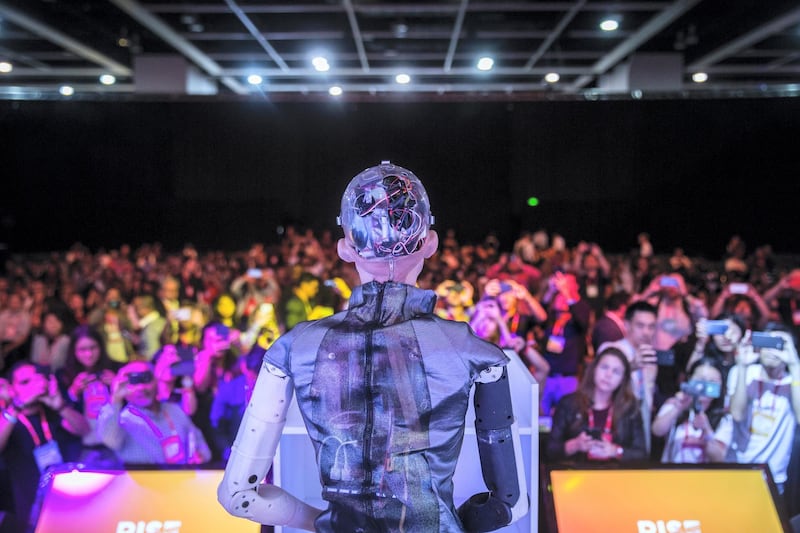As artificial intelligence enhanced solutions penetrate further into our daily lives, we are confronted with the limitations of computers and of humans and the co-ordination between them. The promise of AI runs far ahead of its current capabilities, and yet the challenges are ever more urgent to address. We are at the relative beginning of an era when machines learn to use the data about us and the world around us to do things more efficiently, effectively, and more precisely. At a time when the rate of technological change exceeds imagination of the future, what is key to learn about AI is how it intersects with everything else.
We have a moment now, as the systems are being built, to educate those building these tools. The teaching of AI should accordingly evolve in the inter-disciplinary, cross-sectoral, and multi-modal way in which it is being implemented. That means that teams working on developing products and services need to think not only about the computer science behind a solution, but also the economic, legal, and social implications of their algorithms. Solutions will need to demonstrate that they work not only in theory and as algorithms, but in their application in the different contexts and the representativeness of the data sets analysed. Long-term success in the development of AI will depend on the agility of the collaboration, the diversity and integrity of the data, and the accuracy of the risk assessments.

Students must then be taught primarily to focus on solving problems, rather than producing solutions. This way of teaching requires them to learn not only formulas and commands, but how to work well with each other and to combine complementary strengths. It requires the ability to approach solutions to a problem with the acknowledgment that there are many perspectives, some of them hard to initially anticipate, that can contribute to a better outcome. The real-world solutions will require a multi-stakeholder approach that emphasises the layers of responsibility and the transparency that enables explanation and reproduceability of the results.
The impact of artificial intelligence on how we teach and how we learn is brought into sharp relief within the context of accessibility in education. The ability to absorb a large number of data points and to make customised adaptations based on continuous feedback enables the refinement of tailored teaching methods to individual students. How precision education will leverage individual strengths and challenges opens up exponential opportunities for self-actualisation on an individual level and cohesiveness in team dynamics. The capability for integrating students with learning disabilities whose needs are currently neglected can not only allow for greater inclusiveness, but also simultaneously increase social productivity and mitigate public costs.
The future of artificial intelligence is more human. This is not because we should fear being replaced by machines, but that our uniquely human capacities for judgment and empathy and context can only be augmented. While the automation of tasks may accelerate and the processing of data may grow exponentially, the focus of teaching for the future knowledge workers is making sense of problems and situations. How to handle the exceptions is more important now, as much or even more so than knowing and applying the standards and rules. The ability for sincere empathy and deliberative judgment is what will prepare the future knowledge worker to be adaptive, regardless of the occupation. Pattern recognition and automated decision-making will infiltrate the world of banking and law just as well as the automation of manufacturing and public services.
These shifts in emphasis drawing on different skills mean that - the centres of excellence and innovation, knowledge and entrepreneurship - will excel when they succeed at merging disciplines together and facilitate building upon shared knowledge. There will be institutional advantages to those centres of innovation that can sustain open repositories of knowledge and enable interaction with data. The interoperability of files and formats that maximises the sample from which systems learn require a commitment to co-ordination across stakeholders domestically and with data flows across borders. Those entities internalising these practices not as an arms race, but more like a relay race, will benefit most.
This projected future requires that action is taken now to ensure that the foundations of our AI solutions optimise access to knowledge globally and locally. Co-ordinated industrial and education and science policy implemented now can foster collaborative exchange and open innovation so that the next generation can be sufficiently prepared for the challenges and opportunities they will face.
Kay Firth-Butterfield is head of Artificial Intelligence and Machine Learning at the Center for the Fourth Industrial Revolution at the World Economic Forum






